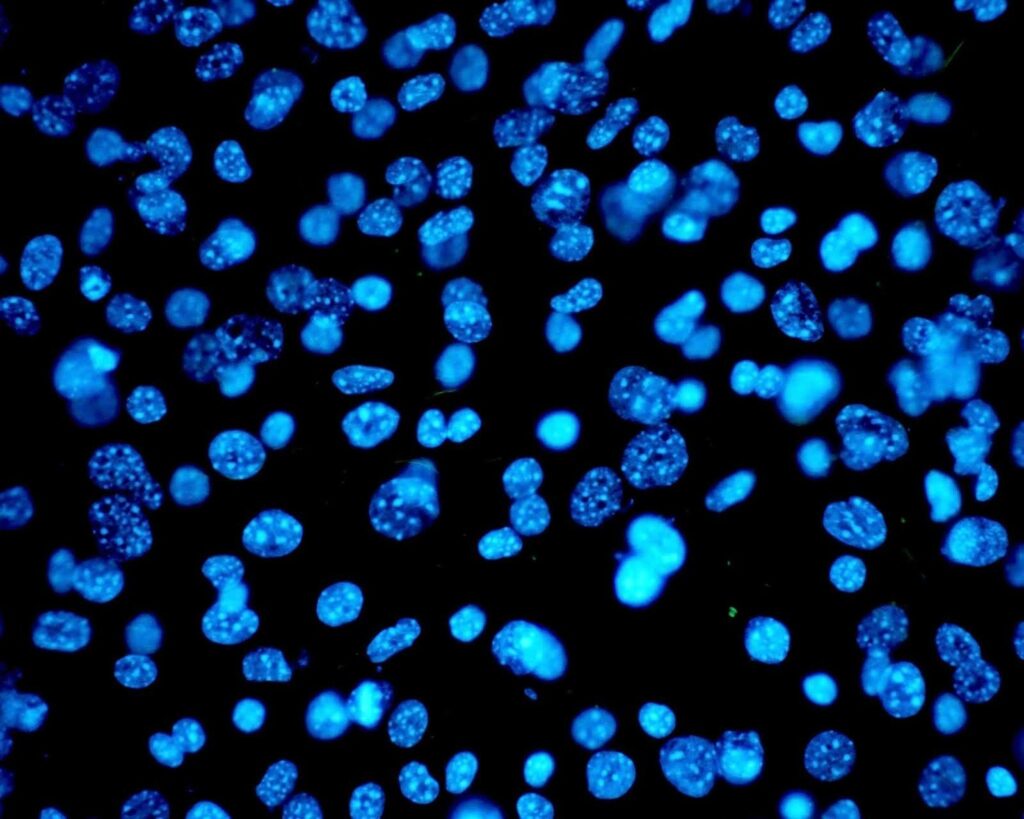BICO News Feed
Discover the latest news from our business areas.
- July 4, 2024
- 8:26 am
Mammalian Cell Line Development: Applications and Common Challenges
Share on facebook
Share on twitter
Share on linkedin
Mammalian Cell Line Development: Applications and Common Challenges
Mammalian cell lines are the cornerstone of translational and basic biomedical research. They provide a relatively cheap and manageable model for countless disease types and are invaluable for the production of many established and cutting-edge therapies1. With the advent of gene editing techniques, mammalian cell lines can be readily altered to suit an increasingly vast range of applications in biomedicine. Thus, mammalian cell line development has become a central technique in this sector. Despite the growing utility of mammalian cell line development and the explosion of new technologies to streamline and derisk workflows, several perennial challenges threaten research and drug development success. In this article, we will discuss the importance of mammalian cell line development to the modern life science industry and highlight the challenges associated with this technique.
Common Cell Lines Used in Production
Selecting the most suitable cell line is crucial for the optimal production of biologics at high yield. In the table below, we highlight factors to consider when choosing a cell line for your specific production workflow.
| Cell Line | Primary Production Outputs | Advantages |
| Chinese hamster ovary (CHO) cells | Proteins and antibodies | Robust and adaptable to various culture conditions |
| Human Embryonic Kidney (HEK293) cells | Recombinant proteins and viral vectors | High transfection efficiency and produce human-specific post-translational modifications |
| NS0 – Mouse myeloma cell line | Monoclonal antibodies | High productivity rates and can be cultured in suspension |
| SP2/0 – Mouse myeloma cell line | Monoclonal antibodies | High productivity rates and suitable for large-scale production |
| Baby Hamster Kidney (BHK) cells | Vaccines and recombinant proteins | Fast growing and can be cultured in suspension |
| Vero Cells – African green monkey kidney cell line | Viral vaccines | High virus propagation and adaptable to various culture conditions |
Why Mammalian?
Mammalian cell lines possess many advantages over other cell types across various biomedical applications. Their ability to closely mimic human cellular processes and responses makes them a preferred choice in drug discovery, therapy production, and research. Mammalian cell lines provide a cellular environment that matches the native environment for protein production. This means that large complex proteins achieve the correct conformation with appropriate posttranslational modifications, both of which are essential for functionality. For instance, HEK293 cells are excellent for providing human-specific post-translational modifications. Let’s dive deeper into the benefits of mammalian cell lines in these areas.
Drug Discovery
Mammalian cell lines are used throughout the drug discovery pipeline, from the discovery phase into the pre-clinical phases for toxicology testing. Specific cell lines are available to study different diseases, including the MCF7 breast cancer cell line and the THP-1 monocyte cell line used to study immune function. When correctly managed, mammalian cell lines provide a reproducible system for modeling cellular responses to different drugs2. As such, it is the go-to model for high throughput screening of drug candidates.
Within this, mammalian cell line development allows researchers to create cell lines that precisely measure the effect of their test therapies. This includes binding, toxicity, and other reporter assays, often using fluorescence or luminescence as the primary readout (Fig. 1)3. The HeLa cell line is commonly used for general toxicity studies. However, the choice of cell line depends on many factors, such as the drug being tested and the need for tissue-specific toxicity tests. Mammalian cell lines also serve as a basis for biomarker discovery and personalized medicine applications.

Figure 1. Cell lines can be engineered to emit fluorescence under certain conditions which allows researchers to visualize the efficacy of their test therapy.
Production
Mammalian cell line development allows the genetic instructions for biological therapies to be added to cell lines, such as CHO cells4. These cells can then be used as tiny factories to produce complex molecules and antibodies for therapeutic purposes. Mammalian cells have many advantages over other cell types, such as bacteria or insects, namely the capacity for complex posttranslational modifications and higher-order protein folding. These factors play a massive role in protein function.
Monoclonal cell lines are required for modern biological therapy production, and putative therapies that lack proof of clonality face slower progress in development pipelines due to regulatory requirements5. Modern technologies like the UP.SIGHT single-cell dispenser and imager from CYTENA provides >99.99% probability of clonal derivation, significantly de-risking drug discovery pipelines. Accurate single-cell dispensing is essential for generating reliable monoclonal populations.
Research
Early-stage research in drug development benefits immensely from mammalian cell lines. These cells provide stable and consistent models for a wide range of diseases, such as cancer, neurological disorders, and immune disorders6,7. Gene editing techniques increase the versatility of mammalian cell lines for research. Typical applications of mammalian cell line modifications include generating knockout cell lines, where a single gene or set of genes is silenced to study their function. Mammalian cell lines can also be used in in vivo studies, such as tumor xenograft cancer models. These studies often serve as pre-clinical justification for proceeding with human clinical trials.
Challenges
Despite the utility of mammalian cell line development across biomedical science applications, many challenges in associated workflows slow research progress. Methods that overcome these challenges give users a significant advantage over the competition. CYTENA provides a full suite of solutions for cell line development, such as the end-to-end automated platform the C.STATION (Fig. 2).

Figure 2. The C.STATION from CYTENA provides an end-to-end, all-in-one solution for automated mammalian cell line development, eliminating common sources of risk.
Contamination
Mammalian cell lines are vulnerable to contamination from microbes like mycoplasma and other cell lines8. Manual manipulation of mammalian cells increases the chances of both types of contamination. Some laboratories use antibiotics to reduce contamination. However, this often masks a low-level contaminant and can affect cell behavior. Automated liquid handlers that are capable of reliable and fast single-cell dispensing all but eliminate the chances of contamination. The UP.SIGHT from CYTENA provides both automation and single-cell dispensing capacities to help ensure monoclonality and reduce the possibility of contamination.
Yield Issues
Single-cell dispensing is just the beginning of mammalian cell line development. The critical next step is choosing the best clone to scale up and use for downstream processes. Good clones exhibit robust growth rates and high yields of the target protein. With thousands of clones in culture, picking the best one can be a real headache. CYTENA’s C.STUDIO software and F.QUANT titer assay give scientists the power to easily select optimal clones based on robust data. The C.STUDIO, coupled with the UP.SIGHT’s imaging capabilities allow researchers to monitor well confluence and cell proliferation (Fig. 3).

Figure 3. CYENA’s best-in-class instrumentation and software allow scientists to easily track and select optimal clones.
Instability
Cell line instability is a major challenge in cell line development, especially in therapy manufacturing settings. Instability means that the characteristics of the cell change due to mutation and changes in growing conditions, among others9. This means high-performing cells may yield fewer target proteins over time or accrue other modifications that make them unsuitable for their purpose.
Fortunately, there are steps researchers can take to reduce the occurrence of instability and mitigate its effects on yield. Maintaining controlled and stable growing conditions helps to prevent instability in cells. Gentle handling and dispensing of cells is also essential for reducing cell stress and instability. The UP.SIGHT uses microfluidic techniques to ensure gentle cell dispensing to achieve 80% clonal recovery, which is especially important when working with fragile cells such as induced pluripotent stem cells. Fully automated workflows ensure consistent growing conditions, and researchers can use the F.QUANT to measure cell performance over time, allowing unstable clones to be easily identified and discarded.
Storage
Storage can pose a significant issue when growing multiple clonal lines simultaneously. Furthermore, improper storage conditions can lead to clonal instability. Automated single-cell dispensing and microfluidics allow entire workflows to be scaled down and optimal clones to be selected within a 96- or 364-well plate format. This minimizes the need for storage that larger formats would require.
Cryopreservation is essential for storage in cell line development. However, if not performed correctly, it can lead to instability and even complete loss of a clone. Automated workflows mean that cryopreservation can be performed using consistent user-defined protocols that minimize the change for cell loss and improve viability.
Conclusions and Future Trends
Mammalian cell lines remain pivotal in biomedical research and therapeutic production, offering versatile and cost-effective models for studying diseases and developing treatments. Despite ongoing challenges such as contamination, yield issues, and instability, advancements in automated technologies continually improve the efficiency and reliability of mammalian cell line development workflows.
Looking forward, further integration of artificial intelligence and machine learning into cell line workflows promises to enhance clone selection and predictive modeling. Additionally, developing more sophisticated gene editing tools will expand the utility of mammalian cell lines, paving the way for more personalized and targeted therapeutic approaches. CYTENA is ready to support scientists who use the latest technologies to push the boundaries of mammalian cell line development.
CYTENA’s collection of best-in-class instruments allows researchers to streamline their mammalian cell line development workflows while significantly reducing common sources of risk.
Ready to take the lead in mammalian cell line development? Book a demo for the UP.SIGHT or check out the cell line development applications supported by our instruments.
References:
- O’Flaherty R, Bergin A, Flampouri E, et al. Mammalian cell culture for production of recombinant proteins: A review of the critical steps in their biomanufacturing. Biotechnology Advances. 2020;43:107552. doi:10.1016/j.biotechadv.2020.107552
- Wei F, Wang S, Gou X. A review for cell-based screening methods in drug discovery. Biophys Rep. 2021;7(6):504-516. doi:10.52601/bpr.2021.210042
- Potekhina ES, Bass DY, Kelmanson IV, et al. Drug Screening with Genetically Encoded Fluorescent Sensors: Today and Tomorrow. Int J Mol Sci. 2020;22(1):148. doi:10.3390/ijms22010148
- Glinšek K, Bozovičar K, Bratkovič T. CRISPR Technologies in Chinese Hamster Ovary Cell Line Engineering. Int J Mol Sci. 2023;24(9):8144. doi:10.3390/ijms24098144
- Welch JT, Arden NS. Considering “clonality”: A regulatory perspective on the importance of the clonal derivation of mammalian cell banks in biopharmaceutical development. Biologicals. 2019;62:16-21. doi:10.1016/j.biologicals.2019.09.006
- Falkenburger BH, Saridaki T, Dinter E. Cellular models for Parkinson’s disease. J Neurochem. 2016;139 Suppl 1:121-130. doi:10.1111/jnc.13618
- Comşa Ş, Cîmpean AM, Raica M. The Story of MCF-7 Breast Cancer Cell Line: 40 years of Experience in Research. Anticancer Res. 2015;35(6):3147-3154.
- Weiskirchen S, Schröder SK, Buhl EM, Weiskirchen R. A Beginner’s Guide to Cell Culture: Practical Advice for Preventing Needless Problems. Cells. 2023;12(5):682.
doi:10.3390/cells12050682 - Geraghty RJ, Capes-Davis A, Davis JM, et al. Guidelines for the use of cell lines in biomedical research. Br J Cancer. 2014;111(6):1021-1046. doi:10.1038/bjc.2014.166
More news
Stay updated
Get the latest first.
Subscribe and stay updated with the latest news!


Copyright © 2026 BICO - All rights reserved.
Contact us!
This site is protected by reCAPTCHA and the Google
Privacy Policy and
Terms of Service apply.

